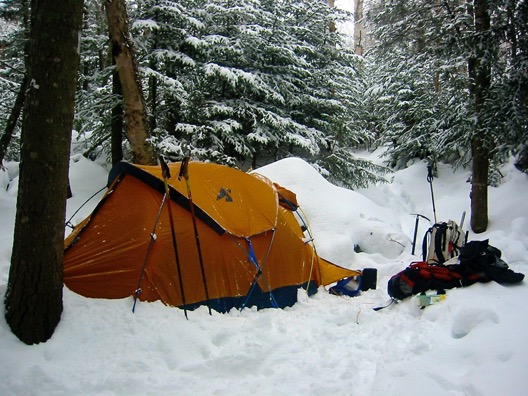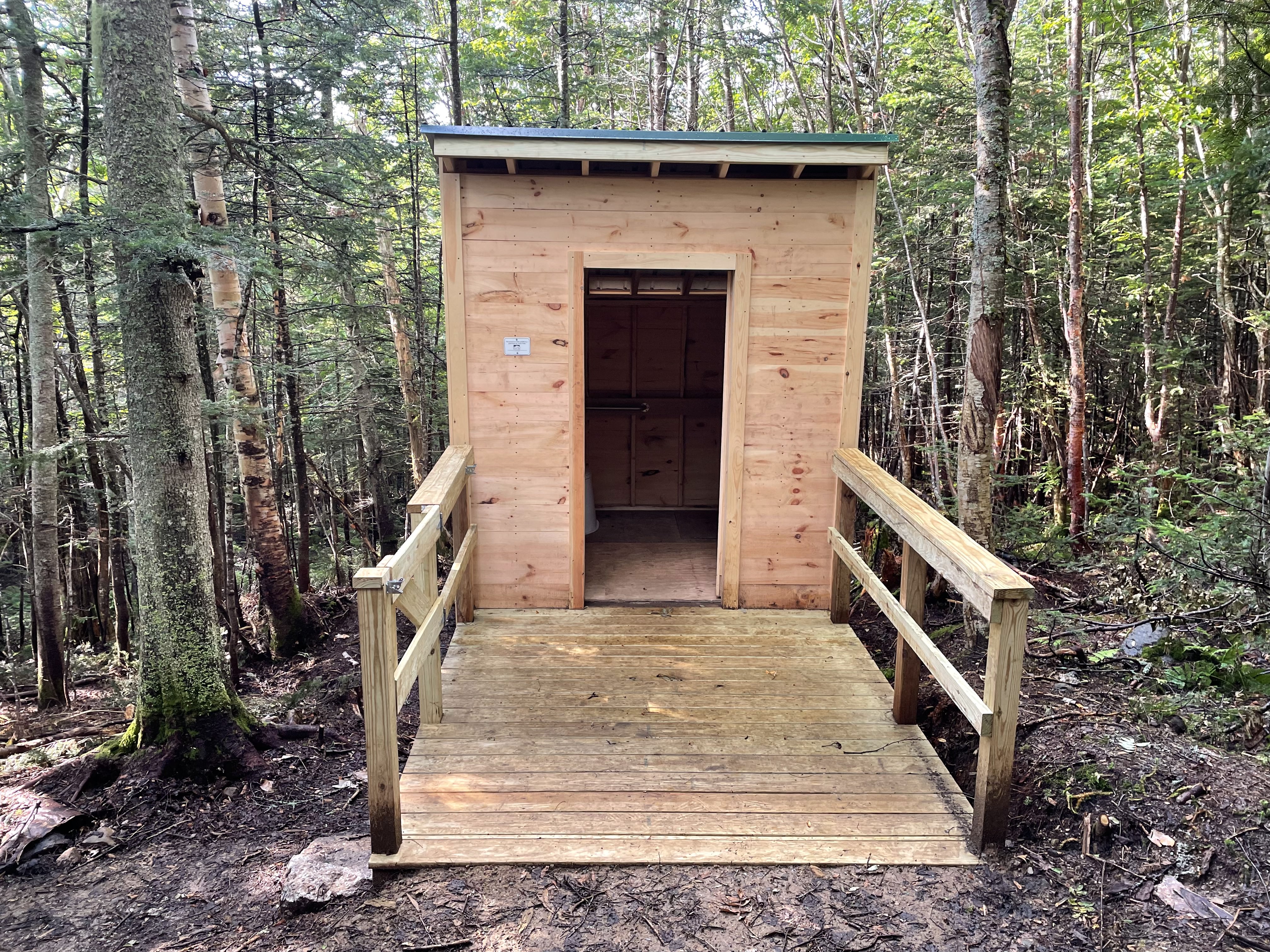
The Cabin
The main floor of the cabin is used for cooking, eating, and socializing. There's a long table, benches, solar powered LED lighting, and clotheslines for drying gear.
The loft, accessible via a ladder near the front door, is a flat open space for laying down sleeping pads and sleeping bags. There are no beds, bedding, or lighting in the loft; please bring your own sleeping bag and pad, as well as a headlamp.
A live-in caretaker is usually at the cabin each night, although he or she is often out during the day. The caretaker provides buckets of untreated water, sourced from a stream behind the cabin. The weather and avalanche report is relayed to the caretaker every morning by radio and then displayed at the cabin.
The cabin is heated with a wood stove between 4 and 9 pm. At all other times the cabin is likely to be at the ambient outdoor temperature which can be very cold on the side of Mt Washington during the winter. Bring appropriate warm layers and a suitably rated sleeping system.
The cabin is equipped with propane cooking stoves, pots, pans, and cooking utensils. You are expected to provide your own food, share cooking space with other guests, and clean up after yourself. Secured storage is provided to protect food from rodents overnight.
Tent Sites
There are 2 tent sites that can accommodate a four-person tent and 12 tent sites that can accommodate a two-person tent. Tent sites are on the bare ground (or, more likely, on top of the snow cover); there are no tent platforms.
Tent guests are not allowed to use the facilities inside the cabin. However, they are free use the privy and to get fresh water from the stream behind the cabin.


Amenities
A moldering privy is located across the Fire Road from the cabin, and it is open to the general public. In season, the caretaker maintains a pee hole in the snow near the cabin.
The weather forecast and avalanche conditions are posted on the inside of the cabin door by 8am each morning.
The cabin is equipped with a radio to make emergency calls. Instructions for using the radio in an emergency are posted inside the cabin in case the caretaker is not present.
